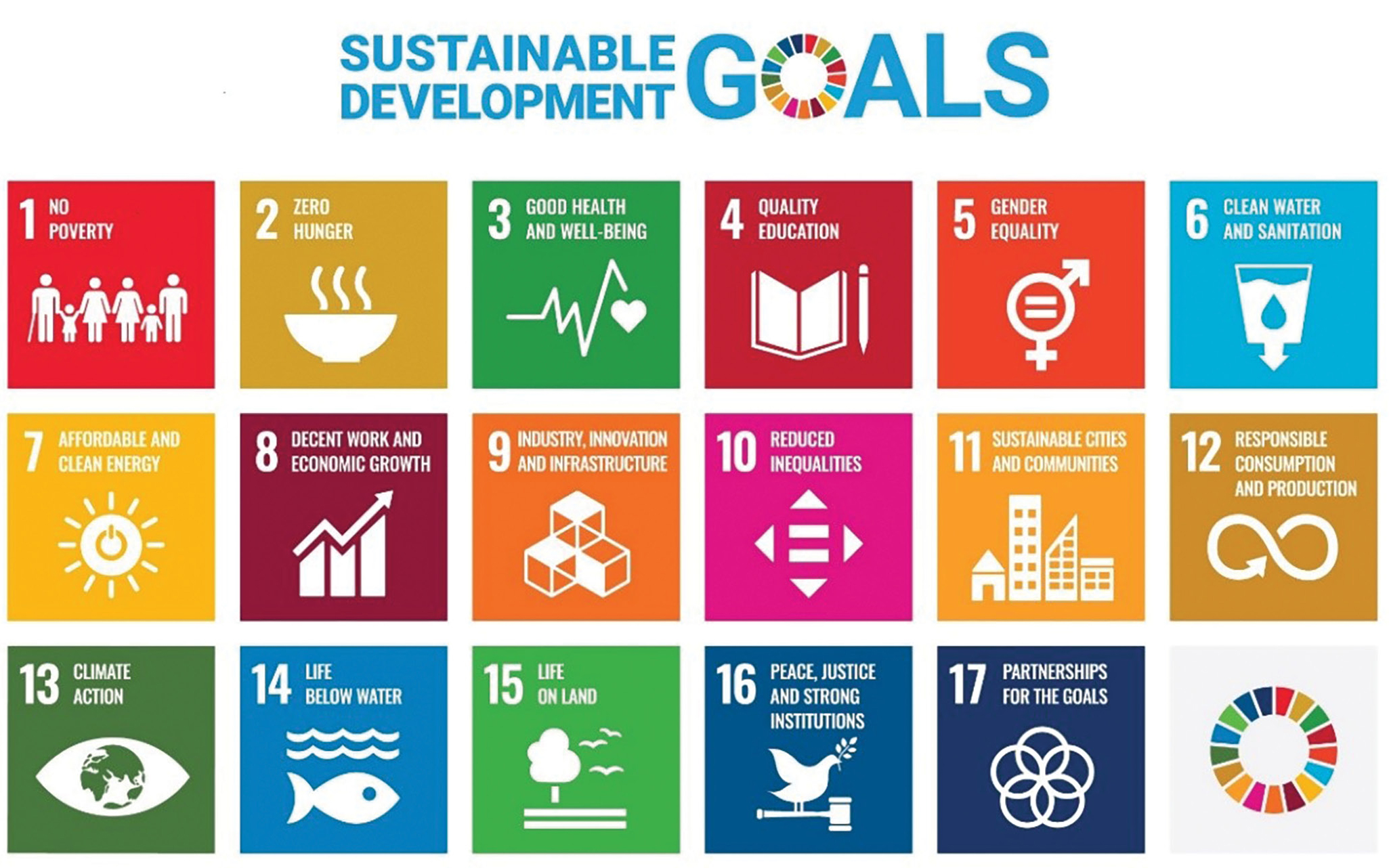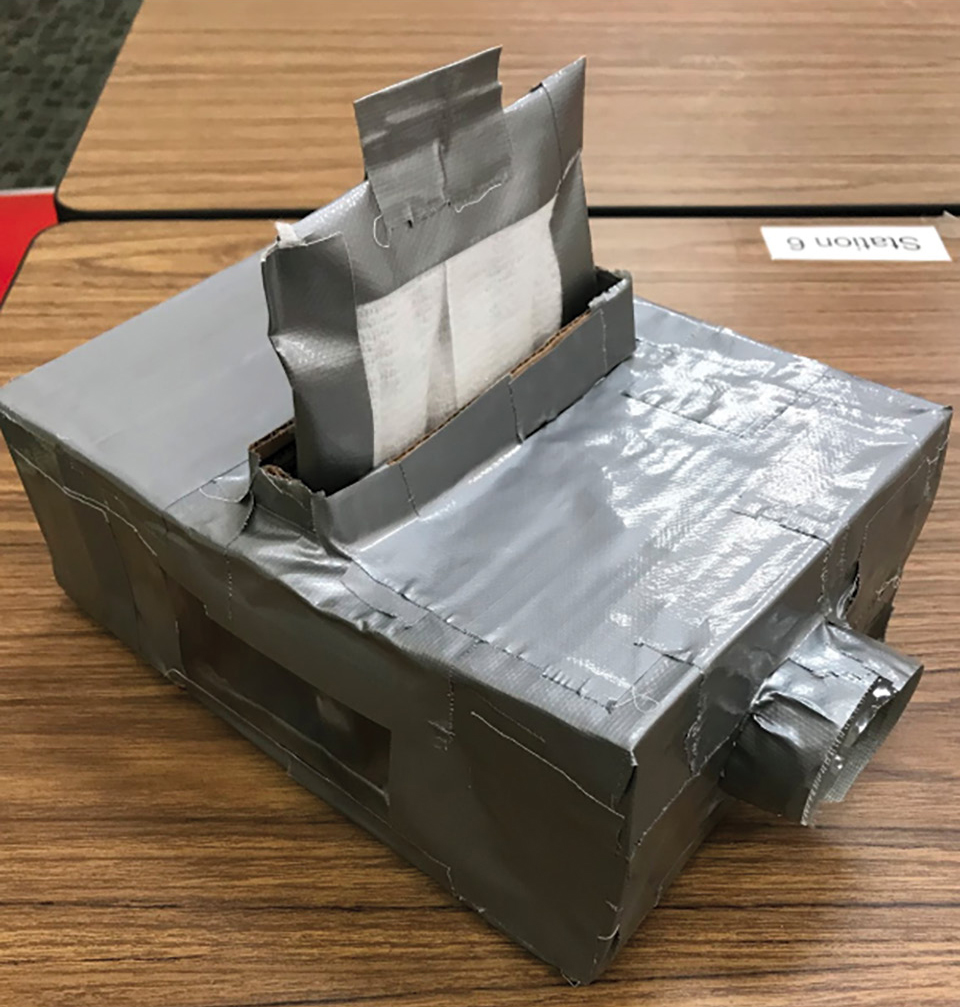feature
Designing a STEM Class
Engineering With a Global Connection
Preparing students to live and work in a high-tech global economy has been at the forefront of many education reform initiatives. How can we prepare the next generation of problem solvers? This article chronicles our middle school’s journey to address these challenges by sharing how the STEM teacher and I developed the first unit for our middle school’s new STEM course. The development of the STEM course aligned with the goals of improving students’ STEM literacy and preparing students for work in our high-tech, globally connected STEM world.
Design Thinking
The STEM teacher and I chose design thinking as our STEM class framework because it required our students to focus on the end user’s needs. Understanding the needs of the end user—the person or persons for whom the students were creating the solution—is the starting point of design thinking. Middle school is a period in students’ lives in which they are beginning to transition from being self-centered to becoming aware of others’ needs (Chandler 2018). The design-thinking framework allowed us to harness this transition for positive purposes.
The design-thinking approach to STEM learning includes the following stages: empathy, define, ideate, prototype, and test. The first stage, establishing empathy, requires students to look to the end user to determine their needs. Examples of end users whose problems our students addressed include the children in New Delhi, India, who worked in the landfills and the children in Indianapolis’s inner city who do not have easy access to fresh fruits and vegetables. Through this process, our students begin to put themselves in the shoes of those whose problems they were trying to solve. During the define stage, students decide and name what the end user needs. Students generate ideas and brainstorm possible solutions to solve the end user’s problem during the ideate stage. During this stage, students are encouraged to think creatively. There are no bad or wrong ideas; all solutions are considered.
When the students have exhausted potential solutions independently, they are challenged to work together to develop what they believe will best meet the end user’s needs. During prototyping, students can draw a design or use materials to build their chosen solution. After the prototype is fabricated, the students consult with the end user (if possible) to share their designs and test them. The students receive feedback from their classmates, teachers, and (ideally) from an authentic audience during the testing phase. After feedback is received, students may return to any stage of design thinking using an iterative process. Although all design-thinking challenges begin with establishing empathy for the end user, progression through the other stages is often not linear.
UN Sustainable Development Goals
After familiarizing ourselves with design thinking, the STEM course teacher and I examined the United Nations’ Sustainable Development Goals (UN SDGs) to identify authentic problems for our students to solve (see Figure 1). Many of our students were unaware of the world beyond their suburban middle-class midwestern life. We hoped to provide a window into life outside their part of the world, and the UN SDGs presented that perspective. The SDGs were developed in 2015 as “a blueprint for shared prosperity in a sustainable world—a world where all people can live productive, vibrant and peaceful lives on a healthy planet” (United Nations 2019, p. 2). The 17 goals provide numerous potential problems for students to address.

United Nations Sustainable Development Goals (used with permission).
As a STEM class, our focus was on the engineering standards of the Next Generation Science Standards (NGSS Lead States 2013). However, other units could align with content standards of the NGSS as well. For example, some units focused on water quality and food deserts. Additionally, units were developed using design thinking and the UN SDGs address many Common Core ELA standards. Finally, the UN SDGs provide potential opportunities to address social studies standards and create the potential for cross-curricular activities.
STEM class in action
After we had chosen the design framework and the authentic problems for the students to address, the STEM class curriculum began to evolve. We chose UN SDG number 11 (Sustainable Cities and Communities) as our first unit. Air quality was one of the issues included in Goal 11; nine out of ten urban residents breathe polluted air (United Nations 2019). We wanted our students to find solutions to an authentic problem and to learn about how some children lived in lesser developed countries or in places where children faced different living standards than our students. To do this, we looked to India and the landfills in New Delhi (children that work in these landfills collect recyclable materials to sell to make money for their families). We began the unit with a short video clip describing the landfills’ conditions. Our students were shocked by the conditions in which children, some who were their age, lived and worked. These introductory activities served as the hook to draw students into the problem and helped them develop empathy for their end users.
Students were encouraged to think about how the children working in the landfill must feel and what they would say is their biggest challenge or problem with air quality. Next, students began to define the problem. One explanation they gave was that the children who worked in the landfill needed a way to filter out the air pollution they breathe. We challenged the students to imagine as many solutions to the problem as they could and gave them one constraint: the potential solutions had to use only materials the children might be able to find in a landfill. After the students came up with multiple ideas, they decided as a group which solution they wanted to use to build their prototype (see Figure 2).

Sample air filter made by middle school students. The air filter is equipped with a removable filter to fit in the testing box.
As each prototype was built, the students tested it. We used an apparatus to measure how well the students’ prototypes filtered the air. The testing apparatus was made out of a shoebox with a hairdryer on one end, a place for the students’ prototype filter in the middle of the box, and a piece of graph paper coated with glue at the other end (see Figure 3). We placed sand on the side with the hairdryer, closed the shoebox lid, and turned on the hairdryer for one minute. Students should wear safety goggles. This should be done under a hood in order to catch any sand particles that might escape. We used sand to represent the particles of dust and pollutants prevalent in the landfills. Pepper was another material that could be used. After one minute, we opened the box and looked to see how much sand made it through the filter and onto the glue-coated paper. Students counted the number of particles of sand on the paper and compared it to a control glue-coated paper that was tested with no filter. See General Instructional Guidance for Design Thinking Units.

Testing apparatus made out of a shoebox, hairdryer, a place for the students’ prototype filter in the middle of the box, and a piece of graph paper coated with glue at the other end.
After testing, the students presented their designs. Presentations included what they learned, what worked, and what did not work. We believed it was a great first unit, and at this point, we thought the unit was finished.
Students’ ownership of learning
Our students expressed frustration that children their age were living and working in such deplorable conditions. Instead of the unit ending, the students asked the STEM class teacher to send their designs to the Indian Embassy for the New Delhi children. They wanted to write letters. They wanted to help. Our students had developed empathy for children that they did not even know.
The STEM class teacher shared this request with me, and the STEM teacher and I both agreed that we could not let this teachable moment pass. She reached out to someone at a local university to see if she could connect with someone in New Delhi. The university provided her with a contact at the Modern School in New Delhi; our students wrote letters to the Modern School’s students. Although these landfills are in the same city as the Modern School, the New Delhi teacher shared that her students had very little knowledge about what was happening there. The Modern School students were touched by the concerns of the students across the world and asked their teacher if they could do a similar project. Their teacher agreed. When the project was over, the Modern School teacher sent pictures of their final projects and a letter to our students (see Figure 4). The letter ended with this statement, “Earth is our only planet on which life exists, and it is our responsibility to undo what has been done by humankind” (N. Chandru, personal communication, October 31, 2019).
Assessment
Formative assessments occurred daily through group check-ins. Depending on the situation, these assessments included group check-ins where the teacher received verbal feedback from the students on the work done. Additionally, students were given sticky notes to leave on the door with answers to formative assessment questions. Some formative assessments involved answering a discussion question in our students’ learning management system. Assessments focused on research and prototype testing. Students were expected to cite evidence and record data from completed tests. Students were also encouraged to take pictures of the testing. By collecting evidence throughout the unit, students had ample data to support their CER (Claims-Evidence-Reasoning) paragraphs required as part of the summative assessment (see air quality lesson in Supplemental Materials).
The summative assessment utilized an analytic rubric to evaluate the final product and the associated presentation (see summative rubric in Supplemental Materials). The rubric guided the process, including design thinking, collaboration, and product creation.
Conclusion
Not every project that the students have completed in the STEM class has ended with global reach. However, feedback from the students has been positive. As veteran teachers, we have been delighted to see students take ownership of their learning using design thinking while addressing authentic problems. We cannot wait to see where such student-centric learning takes our students next. •

Sample air filter made by students at the Modern School in India.
Supplemental Materials
Air quality lesson—https://bit.ly/3NgzL4Z
Summative rubric—https://bit.ly/3mulaXX
Design Thinking Unit— https://bit.ly/3ahj7Uo
Linda Curtis Smith (lcsmith@comcast.net) is STEM Specialist for Yorktown Community Schools in Yorktown, Indiana.
Engineering Literacy NGSS STEM Middle School



